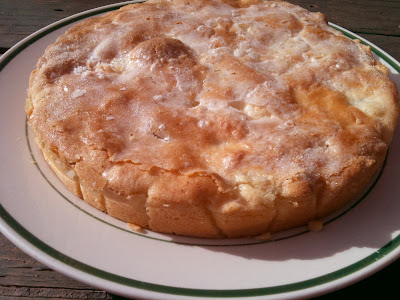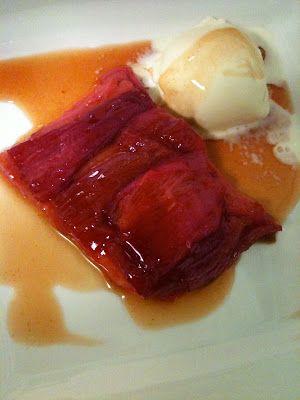
This recipe is adapted from the Women's Weekly Dinner Party Cookbook No. 2, originally published in the early 1980's I believe, but there is no date on the book. There is also a great Lemon Chicken recipe in this cookbook, plus other nostalgic favourites such as Deep-Fried Camembert with Redcurrant Sauce and Cappuccino Souffle with Coffee Creme? But, you'd need to pick it up in a second hand shop..
Ingredients:
125 gm unsalted butter
1/2 cup sugar
1 egg
3/4 cup plain flour
3/4 cup self-raising flour
lightly stewed apples in sugar, or a tin of pie apple
castor sugar
teaspoon grated lemon rind
passionfruit: optional
Method:
1. Cream butter and sugar until light and fluffy. Add egg and continue beating.
2. Sift flours together and gradually add to butter mixture. Pull together, do not over-knead.

3. Place in plastic film and put in fridge for a half hour.
4. Butter and line a 20cm shallow cake tin with baking paper.
5. Take dough out of fridge and divide in two.
6. Roll out one half of dough between two pieces of plastic film.
7. Place in bottom of cake tin (minus plastic film) and press down, building up the sides slightly to hold filling.

8. Place apple or other fruit filling in cake tin over pastry. Sprinkle with sugar and lemon rind. (Add passionfruit if using.)
9. Roll out remaining piece of dough into a circle and place over fruit, pressing down sides.
10. Brush with water and sprinkle with castor sugar.
11. Make in medium to low oven for a half hour.
12. Cool in tin for at least 10 minutes then carefully tip out onto cake cooler.





